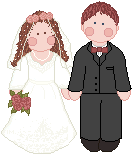Lady'sHeart of the Home |
 Proper Placement of Music for Your Wedding Ceremony and Receptionby Kevin Kinyon (c) 2005http://www.gigmasters.com When planning a wedding ceremony, one of the most common questions wedding planners receive is, "How many songs do I need and where should they go?" The answer to that question varies simply because there is no wrong way to go. There are some guidelines to follow when placing music within a wedding ceremony. One sample program is included below. Sample Wedding Ceremony ProgramPrelude - For the prelude, you might select a pianist or perhaps a string quartet or flutist. The music played in the prelude is usually instrumental. Processional - Whether you choose "Here Comes the Bride" or another accompaniment as you march down the aisle, your processional will announce your arrival. All in attendance will stand as you make your way toward the center point. The most common instrumentalists used for the processional are a pianist and organist. You could certainly opt for another instrument if you prefer. However, keep two things in mind. The instrument(s) need to be loud enough to hear. A flute would not be recommended. Also, if your wedding ceremony is indoors, be sure the instrument isn't too loud, as it will make guests uncomfortable. Poetry/Scripture Readings - If you choose to include this optional segment, you might consider having a soft instrumentalist playing in the background. A harpist, string quartet, organist or pianist would work well here. Most brides use the same instrumentalist who played during the prelude for the readings also. Unity Candle/Soloist - A popular practice in a wedding ceremony is to light a unity candle. The bride's parents and the groom's parents each light separate candles. Then the bride takes one candle, the groom takes the other and they simultaneously light a new candle symbolizing the union of the two families. Three scenarios have taken place during the unity candle lighting. Instrumentalists play softly in the background during the lighting or a soloist sings during the lighting. A third option is to have a gentle melody playing during the lighting and afterward have a soloist sing to the couple. For those who choose not to light a unity candle, this section of the wedding ceremony is an excellent place for your soloist's first song. Vows - There are several places within the exchanging of vows where a soloist could sing a song. Before the vows, after the vows or before the rings are all practical and acceptable places for a soloist to sing. Recessional - The part of the wedding ceremony you've been waiting for! Congratulations! You're husband and wife. Of course, you'll need music to leave by. The same principles apply to the recessional as did to the processional. All in attendance will stand as you make your way out of the gathering place. The most common instrumentalists used for the processional are a pianist and organist. If you choose another instrument, remember it needs to be loud enough to hear, but not loud enough to make guests uncomfortable. Sample Wedding Reception Program Your wedding reception will generally have some sort of entertainment. Typically, a wedding band or DJ will be used. Arrival - Upon your arrival to the reception hall, the bandleader or DJ will announce you as man and wife. Mingling - For the next few minutes, you and your groom will mix and mingle as you make your way to your reserved table. In order to alleviate feelings of awkwardness, music should be playing in the background. Service of Food - At this point, if a formal meal is being served, it will generally take place now. If hors d'oeuvres are offered, guests and the bridal party will simply help themselves throughout the wedding reception. Throughout the meal, soft music should be playing. First Dance - Obviously, you'll want to select a special song for the band or DJ to play for your first dance. This is probably one of the most touching memories you'll have of your wedding reception. Best Man's Toast - Just before the cutting of the cake, the best man will generally offer a toast to the couple. While no music is needed during the toast, your wedding band or DJ needs to be aware of the events, so they can stop and start the music as needed. Cutting of the Cake - A fun and potentially dangerous portion of the wedding reception! Be gentle with one another. Don't do anything you'll regret later. As with the toast, no music is needed during this event. Tossing of Bouquet - No music is played during the tossing of the bouquet or that of the garter. Departure of Bride and Groom - As your friends and family gather to toss rose petals, rice or bird seed, or to blow bubbles, your special day will make way for a special life with your new mate. Congratulations! Kevin Kinyon is President of Gigmasters, a search engine specializing in live entertainment for weddings and other special events. Visit http://www.gigmasters.com today and book harpists, string quartets, soloists, pianists, organists, bands, DJs more quickly and conveniently. Please post your comments on this article or ideas you have for weddings on the Celebrations/Weddings Message Board No right click ResourcesLinks are provided for your information and enjoyment. The links do not imply endorsement of the sites' products or advice.Lady's HOTH Resourcesmore wedding articlesCelebration Message Board Celebrations Blog  Click to join ladyppcelebrations  
|